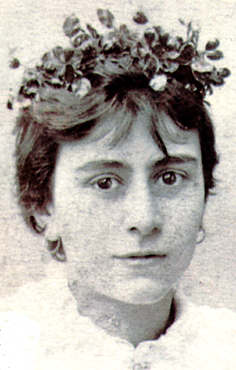 Else Lasker-Schueler was born on 11th Febuary, 1869, in Elberfeld, Germany, the sixth daughter in a Jewish b
Else Lasker-Schueler was born on 11th Febuary, 1869, in Elberfeld, Germany, the sixth daughter in a Jewish bourgeois middle-class family.
Lasker-Schueler was haunted by personal tragedies early on in her life. When she was 13, her youngest brother, to whom she was close, passed away. That same year her parents divorced, and her mother immigrated to the United States a year later. Despite the geographical distance between them, Lasker-Schueler remained close to her mother. "My mother", she would say of her years later, "was a true poet". Her mother died when Lasker- Schueler was only 21.
In 1894 Lasker-Schueler married and moved to Berlin. As a woman who would be a tormented artist all her life, happiness continued to elude her. Her marriage was an unhappy one, and she soon divorced and remarried. During this time, she started to hone her artistic talents, in literature, but also as a painter. She published a few poems, and in 1906 published her first novel. During these years she developed her signature style that synthesized between imagination and reality, the exotic and the familiar. "My Book of Wonders", a collection of poems she published in 1911, established her as one of the main figures of German Expressionism.
Her second marriage ended in 1912, and in 1927, her only son from her first marriage died. She immigrated to Switzerland after the Nazi ascent to power. In 1939, her visit to Palestine became permanent, after the Swiss revoked her residence permit in the country.
Shueler spent the remainder of her life in Jerusalem, where she wrote some of her most important work, such as "My Blue Piano". Even though she thrived creatively, she never remarried and lived alone. She suffered from financial difficulties and had to rely on friends and acquaintances to provide for her. She died in Jerusalem on January 22, 1945.
The personal papers of Else Lasker-Schueler are kept in the Central Zionist Archives (Files A124\36 and A330\399). They comprise mainly personal letters, (to Ruppin, among others), as well as a few early editions of her work.